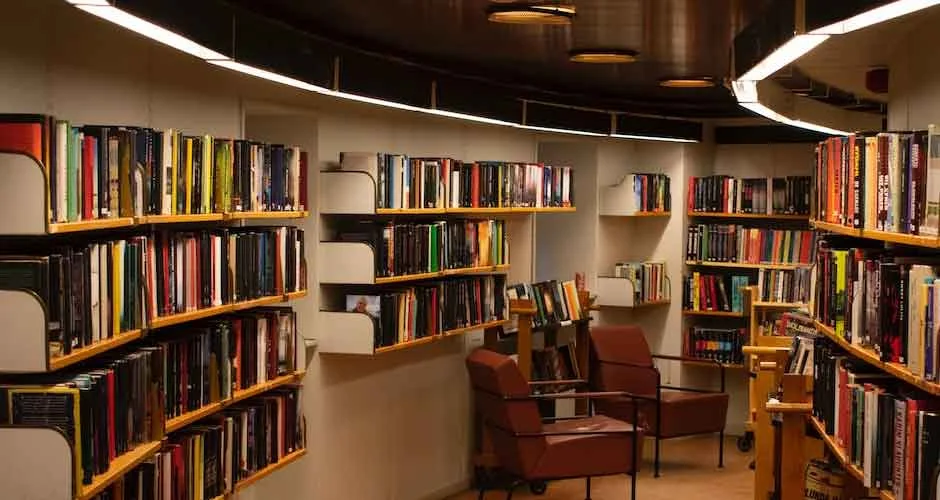
When thinking about creating a welcoming learning environment, furniture might not be the first thing that comes to mind in the busy world of education. However, durable furniture quietly plays a significant role, bearing the weight of thousands of students and the rigors of daily use. This is the untold story of furniture that lasts – providing value, safety, and how the right investment can shape the future of learning spaces. Whether you’re an educator wishing to enhance your classroom or a facilities manager looking to make impactful upgrades, understanding the importance of durable furniture is crucial for fostering an environment that nurtures growth and development.
Long-Lasting Furniture Lets You Worry Less
When managing an educational facility’s day-to-day management, minimizing stress factors for staff and students is paramount. Investing in durable furniture can serve as a potent stress reducer, offering longevity that translates to less worry about wear and tear. Imagine the relief of facilities managers who no longer fear the morning phone call about a broken desk or the inevitable collapse of school cafeteria tables during a rambunctious lunch period. Such concerns become a thing of the past with durable furnishings, providing a reliable backbone for both educators and students to lean on, quite literally, for years to come.
The Heavy Duty Debate in Educational Furnishing
A common trap schools fall into is focusing solely on the cost when buying furniture, which often leads to the purchase of low-quality, affordable items that need rapid replacement. However, there is a heavy-duty debate to be had – investing in furniture with a robust build may initially cost more, but it pays dividends in the long run. High-quality chairs, tables, and cabinets are not just an expenditure; they are an investment in the future of the learning environment. They safeguard against hazards, promote an aesthetic that inspires respect for the space, and contribute to a healthy educational budget by reducing the frequency of replacement purchases.
The Safety-Value Equation
Safety in educational spaces is non-negotiable. Durable furniture directly contributes to the safety equation, indirectly by reducing hazards associated with broken or unstable furniture and directly through its intrinsic materials and construction. In classrooms, labs, and libraries, safety should be paramount, and it’s important to consider how furniture can be a potential source of harm if not chosen wisely. Materials that are easy to clean and maintain also play a crucial role, helping maintain a hygienic space, which is especially important in preventing the spread of illnesses in schools.
Environmental Impact and Sustainability
The environmental impact of furniture is an increasingly significant consideration, in both its manufacture and disposal. Sustainable and durable options not only ensure that natural resources are conserved but also contribute to a reduction in carbon footprint over time. Educational institutions are in a unique position to educate the next generation about the importance of sustainability, and a significant aspect of this message is the furniture present within their walls. By opting for environmentally friendly options, schools exemplify their commitment to this cause and provide students with a tangibly eco-conscious learning environment.
Setting a Positive Example with Smart Investments
The decisions made by educational facilities in the selection of furniture can set a powerful example. Not only for students, who are learning socio-environmental responsibility but also for communities that benefit from the impact of intelligent investment. Smart decisions in furniture selection also mean considering ergonomic designs that prioritize the health and comfort of students and staff. When the right investment is made, the benefits reverberate significantly, setting the stage for a harmonious, productive, and forward-thinking educational institution.
Streamlining the Replacement Process
The replacement of furniture is a cyclical necessity for schools, but the aim should always be to extend the cycle as much as possible. This is achieved through careful planning, quality purchases, and a commitment to maintaining and repairing whenever feasible. By streamlining the replacement process and being proactive, budget lines can be freed up for other important educational needs. It all begins with the first choice – to invest in furniture that is not just a short-term solution, but a long-term partner in the educational process.
The Cultural Dimension of Classroom Design
Classroom design goes beyond mere aesthetics; it influences the culture of learning in profound ways. Durable furniture contributes to this culture by signaling permanence and stability, influencing how students perceive their educational experience. Durable furniture cultivates an environment where educators and learners can thrive by creating a space that reflects a commitment to long-term learning and respect for the student experience.
Beyond the Walls of the Classroom
Educational spaces extend beyond the classroom to encompass common areas, lounges, libraries, and cafeterias – all of which benefit from the presence of furniture that can withstand the test of time. Whether in the form of library shelves that hold a growing collection of knowledge, or the school auditorium seats that accommodate both school plays and parent-teacher conferences, the furniture in an educational facility is a critical support system for activities that enrich the student experience and should be chosen accordingly.
Longevity and Flexibility in Learning Environments

Adaptability is key in the modern educational landscape. A piece of furniture that can serve multiple functions or be easily reconfigured to suit changing needs is invaluable. Long-lasting and flexible furniture can support different pedagogical approaches, collaborative learning, and the integration of technology. In a world where change is the only constant, educational spaces need to be as dynamic as the learning they facilitate – and durable furniture provides this essential versatility.
Future-Proofing Learning Spaces
Investing in durable furniture is, in essence, a way of future-proofing learning spaces. By ensuring that the environment can support not only the current needs but also those that will evolve, educational institutions can demonstrate a forward-thinking approach. The ability to maintain a consistent, quality learning environment, free from the distractions that come with worn or malfunctioning furniture, is an important aspect of preparing students for a future that is constantly in flux.
The importance of durable furniture in educational facilities is clear. It supports the safety, value, and sustainability integral to a high-performing educational institution. By prioritizing durability, we invest not just in furniture but in the future of our schools and the students they serve.


